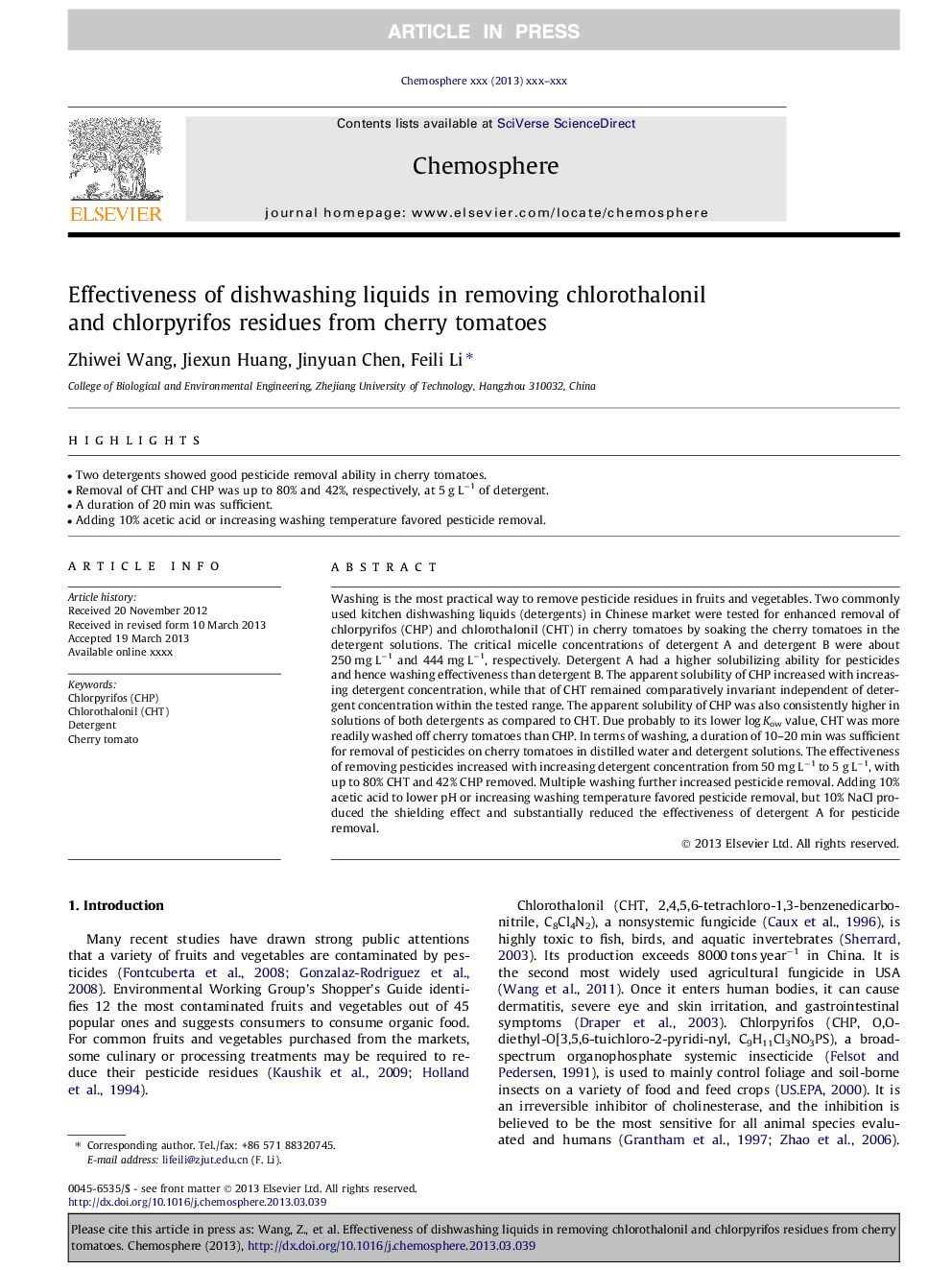| Article ID | Journal | Published Year | Pages | File Type |
|---|---|---|---|---|
| 6310029 | Chemosphere | 2013 | 7 Pages |
Abstract
Washing is the most practical way to remove pesticide residues in fruits and vegetables. Two commonly used kitchen dishwashing liquids (detergents) in Chinese market were tested for enhanced removal of chlorpyrifos (CHP) and chlorothalonil (CHT) in cherry tomatoes by soaking the cherry tomatoes in the detergent solutions. The critical micelle concentrations of detergent A and detergent B were about 250 mg Lâ1 and 444 mg Lâ1, respectively. Detergent A had a higher solubilizing ability for pesticides and hence washing effectiveness than detergent B. The apparent solubility of CHP increased with increasing detergent concentration, while that of CHT remained comparatively invariant independent of detergent concentration within the tested range. The apparent solubility of CHP was also consistently higher in solutions of both detergents as compared to CHT. Due probably to its lower log Kow value, CHT was more readily washed off cherry tomatoes than CHP. In terms of washing, a duration of 10-20 min was sufficient for removal of pesticides on cherry tomatoes in distilled water and detergent solutions. The effectiveness of removing pesticides increased with increasing detergent concentration from 50 mg Lâ1 to 5 g Lâ1, with up to 80% CHT and 42% CHP removed. Multiple washing further increased pesticide removal. Adding 10% acetic acid to lower pH or increasing washing temperature favored pesticide removal, but 10% NaCl produced the shielding effect and substantially reduced the effectiveness of detergent A for pesticide removal.
Keywords
Related Topics
Life Sciences
Environmental Science
Environmental Chemistry
Authors
Zhiwei Wang, Jiexun Huang, Jinyuan Chen, Feili Li,
